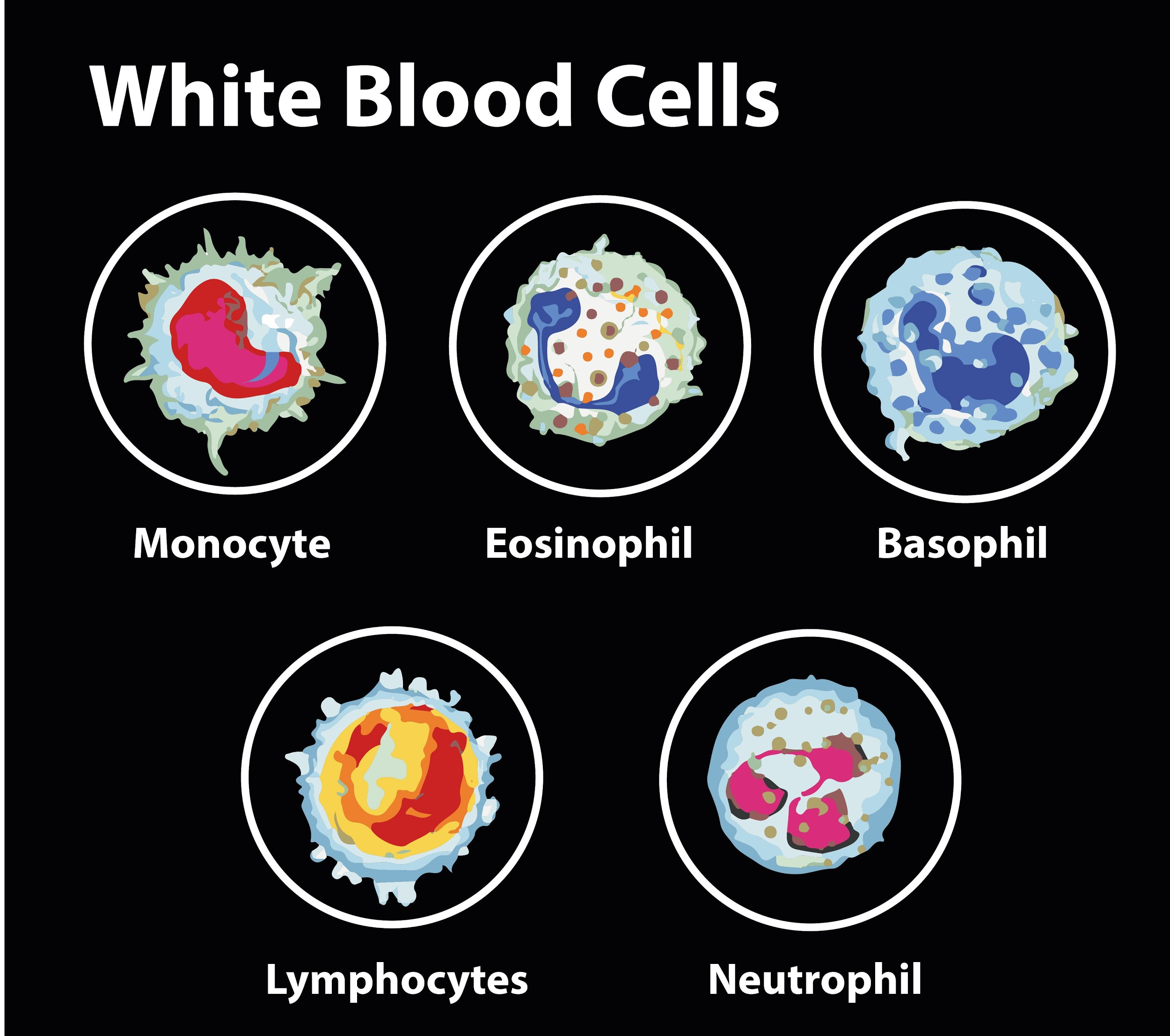
Life span of human WBC is normally
A. 13-20 days
B. 80-90 days
C. 100-120 days
D. 20-30 days
Answer
460.5k+ views
Hint: The types of blood cells that provide immunity to our body and prevent diseases. These are colorless and survive for two weeks.
Complete answer:
WBCs or White Blood Cells or erythrocytes are the type of blood cells that are colourless as they do not contain haemoglobin. They survive in the body for around 13 to 20 days and then are destroyed by the lymphatic system.
Additional Information: There are two major types of WBC
Granulocyte: This group contains Eosinophils, basophils, neutrophils
Agranulocyte: This group contains Monocytes and lymphocytes. Out of these neutrophils are highest in number (60% of total).
These cells provide immunity to our body by producing antibodies against infection and carry out different functions. Their shape is irregular and contains the nucleus. On average, they are present very less in number and are about 6000-8000 per cubic metre. These are manufactured by the bone marrow. They are found in both the cardiovascular system and the lymphatic system. They contribute to 1% of the blood volume.
The function of different WBCs
-Monocytes neutrophils help in phagocytosis.
-Basophils are responsible for the inflammatory reactions and the secretion of histamine, serotonin etc.
-Eosinophils prevent infections and are related to allergies.
-Lymphocytes which are of two types-B and T are the ones who have the charge for the immune response.
So, the correct answer is ‘13-20 days'
Note: Phagocytosis is the process carried out by the WBC in which they engulf the foreign particles like bacteria, dying cells etc in order to prevent damage to the organism. The lymphatic system excludes the RBCs and constitutes tonsils, spleen, adenoids, thymus etc. When WBCs undergo uncontrolled division it is Leukemia or blood cancer.

Complete answer:
WBCs or White Blood Cells or erythrocytes are the type of blood cells that are colourless as they do not contain haemoglobin. They survive in the body for around 13 to 20 days and then are destroyed by the lymphatic system.
Additional Information: There are two major types of WBC
Granulocyte: This group contains Eosinophils, basophils, neutrophils
Agranulocyte: This group contains Monocytes and lymphocytes. Out of these neutrophils are highest in number (60% of total).
These cells provide immunity to our body by producing antibodies against infection and carry out different functions. Their shape is irregular and contains the nucleus. On average, they are present very less in number and are about 6000-8000 per cubic metre. These are manufactured by the bone marrow. They are found in both the cardiovascular system and the lymphatic system. They contribute to 1% of the blood volume.
The function of different WBCs
-Monocytes neutrophils help in phagocytosis.
-Basophils are responsible for the inflammatory reactions and the secretion of histamine, serotonin etc.
-Eosinophils prevent infections and are related to allergies.
-Lymphocytes which are of two types-B and T are the ones who have the charge for the immune response.
So, the correct answer is ‘13-20 days'
Note: Phagocytosis is the process carried out by the WBC in which they engulf the foreign particles like bacteria, dying cells etc in order to prevent damage to the organism. The lymphatic system excludes the RBCs and constitutes tonsils, spleen, adenoids, thymus etc. When WBCs undergo uncontrolled division it is Leukemia or blood cancer.

Recently Updated Pages
Master Class 11 Accountancy: Engaging Questions & Answers for Success

Glucose when reduced with HI and red Phosphorus gives class 11 chemistry CBSE

The highest possible oxidation states of Uranium and class 11 chemistry CBSE

Find the value of x if the mode of the following data class 11 maths CBSE

Which of the following can be used in the Friedel Crafts class 11 chemistry CBSE

A sphere of mass 40 kg is attracted by a second sphere class 11 physics CBSE

Trending doubts
What organs are located on the left side of your body class 11 biology CBSE

The combining capacity of an element is known as i class 11 chemistry CBSE

Proton was discovered by A Thomson B Rutherford C Chadwick class 11 chemistry CBSE

Define least count of vernier callipers How do you class 11 physics CBSE

Distinguish between Mitosis and Meiosis class 11 biology CBSE

Number of oneone functions from A to B where nA 4 and class 11 maths CBSE




